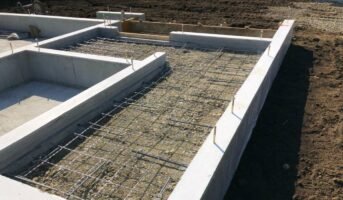Windows are an integral element of a house or any building, providing ventilation and lighting during the daytime, while ensuring privacy indoors. Over the years, window designs have evolved due to technological advancements. The use of energy-efficient windows and glazings, help in reducing energy consumption and indoor pollution levels. The right choice of glazing systems can significantly improve the energy efficiency of the structure. Glazed windows are high-performance window designs that reduce heat transfer, condensation and air leakage.
see also about: window mirror design
Glazing meaning
The term glazing is derived from the word ‘glass’ and refers to a wall or a window constructed from glass. It also means the process of cutting, installation and removal of glass.
See also: All about UPVC windows
Glazing: Quick facts
| Meaning of Glazing | Installation of glass on windows or wall |
| Types of glazing | Single-glass glazing, double-glass glazing, triple-glass glazing |
| Uses of glazing | Thermal insulation, noise reduction, security |
| Cost of glazed glass | Rs 300 to Rs 500 per square foot |
Purpose of glazing
Glazing helps insulate the interiors from the exterior. This results in lesser energy consumption and ensures a constant temperature difference between indoors and outdoors. Glazing allows heat retention during winters and the reflection of heat during summers. An additional layer of glass in multi-pane windows helps reduce noise levels. This is another major benefit of glazing. Multi-pane windows are tougher to break. Thus, it ensures safety and security for the inhabitants of the house.
Types of glazing
Traditionally, single-glazed windows, comprising a single glass pane, have been used in buildings. However, more varieties are available now.
Single glass glazing
Single glazed glass windows comprise a single layer of glass. Such windows allow more heat loss and maximum transmission of natural light. The demand for energy-efficient glazing systems has increased due to climate change, resulting in changing temperatures and weather patterns.
Double glass glazing
Double glazing windows are designed with two glass panes, facilitating better insulation and noise control. Additional insulation is achieved due to the gap between the two layers of glass. These windows help maintain indoor conditions by retaining heat, leading to energy efficiency. However, the ability to let in natural light is similar to that of single glazed glass windows. Buildings with single-glazed windows can be retrofitted by installing an additional glass pane.
Triple glass glazing
Triple glass glazing windows provide maximum energy efficiency as they comprise three glass panes. The presence of additional panes helps in noise reduction. They work better in providing insulation compared to single pane glass windows. Such windows are preferred for constructing French windows or large-sized windows, ensuring improved protection.
See also: Modern door glass designs for your apartments
Based on their applications in architecture, glazings are classified into following categories:
Tempered or toughened glass
Tempered glass, also known as toughened glass, is a type of glass produced through heat or chemical treatment, thus, gaining more strength than ordinary glass. When this type of glass breaks, it results in tiny granular pieces rather than uneven shapes with sharp edges.
Applications: It is used widely in vehicle windows, aquariums, refrigerator trays, bullet-resistant glass surfaces, cookware, bathroom shower doors, mobile phone screen guards, etc.

See also about: window glass design
Laminated glass
Laminated glass is produced from glass layers held together with polymer interlayer, forming a permanent bond. When the glass breaks, the interlayers hold the glass intact by forming a cracking pattern and prevent it from shattering into pieces. The interlayers are created under heat and pressure, providing high strength to the material.
Applications: The material is popularly used in automobile windshields, skylight glazing, display cabinets in jewellery stores, aquariums, glass staircases, floors and roofs. It is also used in buildings prone to natural disasters like hurricanes.

See also: Pros and cons of glass facade buildings
Annealed glass or float glass
Float glass refers to a glass sheet manufactured from floating molten glass. It comprises raw materials such as limestone, sand, dolomite, soda, and salt cake, melted in a furnace and poured into a chamber having a bed of molten metal like tin. Annealed glass is made to cool in a slow and controlled manner.
Applications: Float glass is used for designing modern windows and doors, furniture, automobile glass, and mirrors. Float glass materials are further processed to create specialised glass materials, including laminated safety glass, frosted glass, toughened glass, and soundproof glass.

Clear or tinted glass
Glass can be clear or tinted. Tinted glass surfaces are coated with a translucent film that helps reject sunlight, thus, helping to enhance energy efficiency.
Applications: Tinted glass is used to provide protection against UV radiation. It is used for glass doors, shower screens, and in office spaces.

Low-emissivity (Low-E) glass
This type of glass has a coating done on one or more glass surfaces to lower its emissivity to reflect more infra-red radiations rather than absorb them. Thus, it helps in controlling the heat loss in cooler climates and reducing heat inside a building during the hotter climatic conditions.
Applications: Low-e glasses are preferred where there is high demand for energy-efficient glass. They help lower the heating and cooling costs in modern buildings.
Other forms of glass include textured, frosted, and stained glass mainly used for aesthetic or safety purposes.
Glazings: How is glazing done?
Glazing can be fitted over a window sash or door frame, typically designed from wood, PVC or aluminium. The glass is mounted into a recess in the frame with support of triangular glazing points or putty. Glazing can be done with laminated or toughened glasses by directly attaching the glass panes to a metal framework with bolts that pass through drilled holes. Usually, glazing is applied in low-temperature solar thermal collectors as it retains the collected heat.
See also: 10 eye-catching glass house design to take inspiration from
Glazings advantages
Glazings, especially double and triple-glazed windows, have many advantages, as explained below:
Lower energy consumption
Insulated glazing comprises two glass panes that help lower heat entering or leaving a room. This feature is beneficial in keeping a house cool in summers and warm in winters, reducing the use of air conditioners or heaters, respectively. Hence, it minimises the consumption of electricity.
Safety
Double glazing windows are stronger and difficult to break. Hence, they ensure better security against break-ins and lower accident risks in a natural disaster or harsh weather.
Soundproofing
Double or triple glazing makes the windows thicker, thus, aiding in sound reduction. This feature may be useful in buildings located near airports or busy roads in a city.
Lesser interior fading
Furniture surfaces and decor items tend to fade due to prolonged heat exposure, wear and tear. As window glazing blocks excess heat, furnishings remain protected and stay undamaged for a long time.
Durability
The material is highly durable. For instance, float glass is treated to provide increased strength and durability.
Design options
Laminated glazing comes in numerous colours and tones. Moreover, such window glazing options are versatile as they are available in straight or curved designs.
Energy-efficient glass options for windows
If you are looking for an energy-efficient glass for your home, it is essential to understand the concept of low emissivity glass. A low emissivity glass has the potential to prevent sun’s rays from escaping from the room or it can reflect the rays and stop the heat from entering. Low emissivity glass is classified into:
- Low e hard coat: A hard coating is applied when manufacturing the glass. While the glass is very hot and flexible, it is sprayed with a coating and then chemically bonded into the glass surface. It can be used as a single pane of glass within a building, known as ‘single glaze, which is much more robust.
- Low e soft coat: On the other hand, low e soft coat, cannot be used as a single glaze window. Typically, it features within a double glaze configuration. A soft coating is sprayed onto the glass after the production process and once the pane has cooled down. It offers better energy efficiency, but it is not robust.
When selecting glass for better energy efficiency, it is essential to consider the climate you live in. If you reside in a hotter climate, energy efficiency is mainly about allowing as much heat into the house as possible. Double-glazed windows with low e glass is an ideal option. On the other hand, single glazed windows with tint glass on the outside part of the window is a good option. This configuration allows heat into your home before trapping the heat on the inside of the house.
Noise-reducing glass for windows
Soundproof type of glass for windows, such as uPVC windows, help in preventing noise from entering the house. Acoustic insulation windows come in a wide range of sizes and thicknesses. They can be installed in aluminium or wooden windows.
Durability of different glass options for windows
There are different types of glasses such as toughened or tempered glass, laminated glass and plate glass. Toughened glass is made by using controlled thermal or chemical treatment processes, which increases the strength of the glass compared to traditional ‘plate’ glass. When tempered, the outer surface tends to compress while the inner surface gets tension and makes it resistant to breakage. The laminated glass holds together when it is shuttered and remains in the frame. The interlayer made of polyvinyl butyric (PVB) keeps it together and prevents it from crumbling into smaller particles. Plate glass, on the other hand, is known to be least durable and most breakable type of glass.
FAQs
Why is glazing done?
Glazing for windows makes the structure more energy efficient while providing safety and protection against damage and ensuring better soundproofing.
What is the difference between window and glazing?
Glazing is the process of installing glass into a window, door, or wall. The term ‘glazing’ may also be used for a glass or a transparent material, whereas a window is an opening fitted with one or more glass panes.
What is a glass glaze?
Glass glaze refers to the glass installed in a window or a wall.
What are the three types of glazing?
Three types of glazing are single-pane, double-pane and triple-pane glazing.
What type of glass is best?
Laminated glass is considered to be strong and is more difficult to break compared to tempered glass.
| Got any questions or point of view on our article? We would love to hear from you. Write to our Editor-in-Chief Jhumur Ghosh at [email protected] |
Harini is a content management professional with over 12 years of experience. She has contributed articles for various domains, including real estate, finance, health and travel insurance and e-governance. She has in-depth experience in writing well-researched articles on property trends, infrastructure, taxation, real estate projects and related topics. A Bachelor of Science with Honours in Physics, Harini prefers reading motivational books and keeping abreast of the latest developments in the real estate sector.












